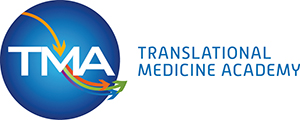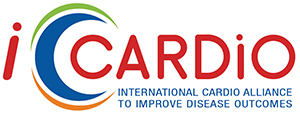Clinical trial design, endpoints and regulatory considerations in heart failure

Published: March 28, 2024
Abstract Views: 5037
PDF: 195
HTML: 68
HTML: 68
Publisher's note
All claims expressed in this article are solely those of the authors and do not necessarily represent those of their affiliated organizations, or those of the publisher, the editors and the reviewers. Any product that may be evaluated in this article or claim that may be made by its manufacturer is not guaranteed or endorsed by the publisher.
All claims expressed in this article are solely those of the authors and do not necessarily represent those of their affiliated organizations, or those of the publisher, the editors and the reviewers. Any product that may be evaluated in this article or claim that may be made by its manufacturer is not guaranteed or endorsed by the publisher.
Similar Articles
- Rachel Anne Xuereb, Sara Xuereb, Kentaro Yamagata, Robert George Xuereb, Anomalous origin of right coronary artery from the pulmonary artery: an incidental finding on cardiac computed tomography in a patient presenting with dyspnea , Global Cardiology: Vol. 2 No. 1 (2024)
- Natasa Sedlar Kobe, Daniel Omersa, Mitja Lainscak, Jerneja Farkas, Depression, health-related quality of life and life satisfaction in patients with heart failure , Global Cardiology: Vol. 2 No. 3 (2024)
- Enrico Cerrato, Ilaria Meynet, Giorgio Quadri, Federico Giacobbe, Cristina Rolfo, Francesco Tomassini, Fabio Ferrari, Fabio Mariani, Luca Lo Savio, Matteo Bianco, Paola Destefanis, Alessia Luciano, Carol Gravinese, Emanuele Tizzani, Sara Giolitto, Antonella Corleto, Fabrizio D’Ascenzo, Umberto Barbero, Fernando Macaya, Javier Escaned, Roberto Pozzi, Ferdinando Varbella, Acute interventional management of spontaneous coronary artery dissection: case series and literature review , Global Cardiology: Vol. 2 No. 1 (2024)
- Asija Začiragić, Marija Mikić, Amela Dervišević, Orhan Lepara, Nesina Avdagić, Nermina Babić, Almir Fajkić, Amina Valjevac, Neck-to-height ratio in Bosnian university students according to the 2017 American College of Cardiology/American Heart Association guidelines on hypertension classification , Global Cardiology: Vol. 2 No. 1 (2024)
- Muhammad Shariq Usman, Arsalan Hamid, Shurjeel Uddin Qazi, Mikhail N. Kosiborod, Deepak L. Bhatt, Muhammad Shahzeb Khan, Muthiah Vaduganathan, Javed Butler, The effect of SGLT2 inhibitors on health status in patients with heart failure: a systematic review and meta-analysis , Global Cardiology: Vol. 2 No. 2 (2024)
- Muhammad Shahzeb Khan, Javed Butler, Tim Friede, Piotr Ponikowski, Stefan D. Anker, To clip or not to clip moderate-to-severe functional mitral regurgitation in patients with heart failure? , Global Cardiology: Vol. 2 No. 3 (2024)
- Babalawan Muhammad, Naser A. Ishaq, Kamilu M. Karaye, Clinical profiles and short-term outcomes of women with peripartum and dilated cardiomyopathies , Global Cardiology: Vol. 2 No. 3 (2024)
- Petros Fountoulakis, Aikaterini Siama, Aimilianos Kalogeris, Marianthi Iliopoulou, Athanasios Tsoukas, Athanasios Manolis, Tricuspid valve fungal endocarditis in a patient with breast cancer and an implantable chemotherapy venous access port , Global Cardiology: Vol. 1 No. 1 (2023)
- Cecilia Salzillo, Lorenzo Giovannico, Giuseppe Fischetti, Gerardo Cazzato, Mario Magistro, Grazia Nucci, Gabriella Serio, Andrea Marzullo, Preliminary study on the immunohistochemical expression of galectin-3 in hypertrophic hearts , Global Cardiology: Vol. 2 No. 2 (2024)
- Andrew J.S. Coats, Global Cardiology issue highlights , Global Cardiology: Vol. 2 No. 2 (2024)
You may also start an advanced similarity search for this article.

 https://doi.org/10.4081/cardio.2024.18
https://doi.org/10.4081/cardio.2024.18









